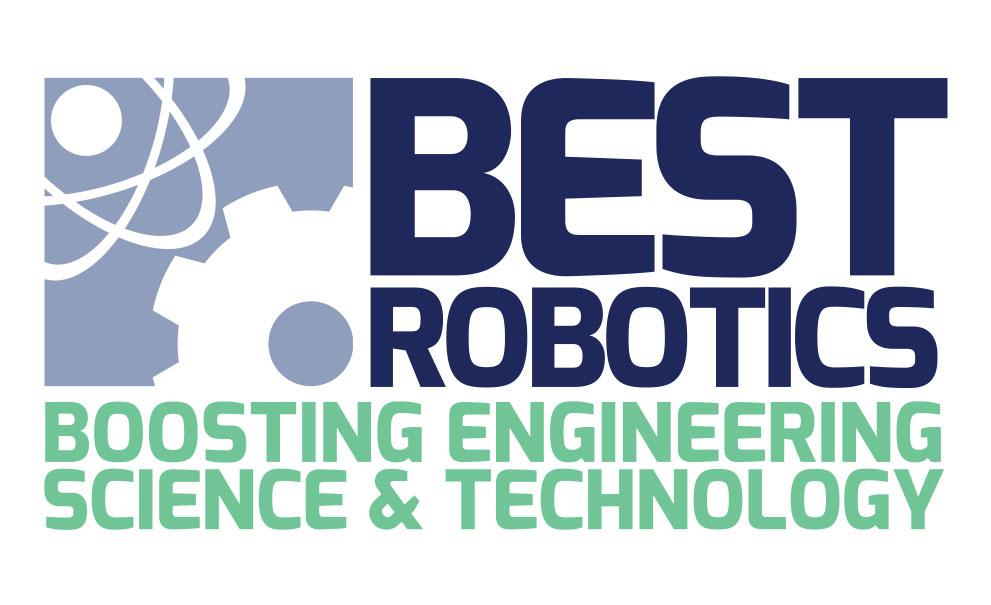Pay Dirt
(Courtesy of SA BEST)
Pay Dirt is based in the world of mining ore. Teams are tasked with repairing their mineshaft while they extract valuable minerals from the interior of the mine. Each team has its own mineshaft that consists of multiple “levels” that eventually connect to a common level in the center of the mining complex. Levels may only be accessed by passing through tunnels and minerals and other mine components may only be moved between levels through the tunnels. Tunnels are represented by wooden frames and mine levels are designated by wooden borders that represent the rock walls of the mine (and therefore cannot be crossed).

Overview of the field - the levels are divided by tunnels

Tunnel between levels 1 and 2.
Each robot starts at level 0 which is also where the scoring bins are located. A description of the minerals and their initial locations are listed in the table that follows. To score points for a mineral, it must be retrieved and placed into the correct location or bin at level 0. The value of the minerals found at each level increases as the mine level increases. The scoring values listed in the table are in effect at the start of the competition, but the values can change from a “market shift” as described later.
Name |
Description |
Number per Quadrant |
Value* |
Starting |
Scoring |
Limestone Aggregate |
Tape covered Tissue Roll |
5 |
2 |
Tunnel 1 |
Robot Box |
Coal |
Squeeze Toy |
24 |
5 |
Level 1 |
Specific Bin |
Magnetite |
Golf Ball |
20 |
7 |
Level 1 |
Specific Bin |
Bauxite |
Foil Ball |
16 |
10 |
Level 2 |
Specific Bin |
Chalcopyrite |
PVC Fittings |
12 |
15 |
Level 2 |
Specific Bin |
Spodumene |
2x2x9 inch wood |
8 (Field) |
25 |
Level 3 |
Specific Bin |
 |
 |
| Mineral bins and other level 0 components | Limestone and coal |
Other activities that also score points are related to mine maintenance at levels 1 and 2 and the retrieval of core samples located at level 3. As shown in the table that follows, the spare parts for maintenance start out at level 0 with the robot and that is also where any retrieved core samples should be placed to score. If multiple core samples are retrieved, only this highest value core sample will count.
Name |
Description |
Number per Quadrant |
Value |
Starting |
Scoring |
Core Samples |
PVC Pipe |
3 |
150, 100, or 50 |
Level 3 |
Spare Parts Rack (Level 0) |
Replacement Air Filter |
¾-inch Foam Board |
1 |
100 |
Spare Parts Rack |
Filtration System (Level 1) |
Replacement Pipe |
PVC Pipe with Elbows |
1 |
100 |
Spare Parts Rack |
Broken Pipe Platform (Level 2) |
 |
 |
| Filter housing, copper ore, and iron ore (inside PVC pipe) | Aluminum ore and pipe platform |
In addition to helping the driver with directions and strategy, the spotters are allowed to interact with the minerals under very specific rules. These rules include:
- The spotter may move minerals between the robot starting box and the scoring bins and also may move items between the scoring bins to correct a misplaced item.
- The spotter is only allowed to interact with the items if they are completely within the robot starting box and not in contact with the robot.
- The spotter may touch/pick up a detached portion of the robot, but only if it’s in the robot starting box, a scoring bin, or in the spotter’s box.
Teams have constructed their machines subject to a list of allowable materials and other rules on construction as well as initial size and weight limits. There are also numerous restrictions on how the game is played. A partial list of some of the basic restrictions is provided here:
- The tunnels are the only way for robots and game pieces to move between levels.
- Coal cannot be touched while it is still in the coal chute.
- Detached sub-assemblies are not considered part of the robot, but cannot be deposited in level 3.
- Blocking in level 3 is prohibited.
- Scoring bins cannot be moved by the robot or spotter.
The eighth team for the semi-finals will be the winner of a single “wildcard” game. The participants for the wildcard game are selected based on the score of their engineering notebook. All teams are required to turn in an engineering notebook documenting the development and design of their robot. This notebook is a significant portion of the BEST Award and the wildcard game gives teams further incentive to turn in quality notebooks by rewarding them for their effort.
At the start of the semi-finals, the scores will be reset to zero. For the semi-final round robin playoff, the top eight teams will each play three matches. The total of each team’s scores for these three matches will determine which four teams advance to the finals. For the final competition, total scores will again be reset to zero. The top four teams will play three additional matches to determine the final ranking order.
This game has a twist that reflects market pricing of commodities. The values of the minerals change after the seeding (and wildcard) matches have been completed so that the semi-final matches are played with different point values. The values also change between the semi-final matches and the final matches. This value change occurs based on the total number of a commodity mined during the previous phase of the competition. For example, the value of the minerals during the semi-final matches is based on the amount of an item mined during the seeding competition. Values are adjusted so that minerals that have been mined more than the average decrease in value while those that have been mined less than the average increase in value. Teams may have to alter their strategy based on the market shift.

 Announcements
Announcements










